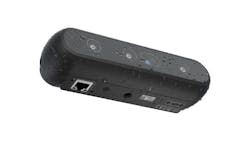Intel (Santa Clara, CA, USA) recently completed its spinoff of its RealSense 3D camera business.
Now an independent company, RealSense also closed on $50 million in series A funding and announced its first new product, the D555 PoE camera.
RealSense is known for 3D depth cameras, including stereo and LiDAR cameras, that are deployed in robotics. Intel introduced its LiDAR camera, the RealSense L515, in 2020. Intel's 3D efforts were originally part of its Perceptual Computing Division, which the company rebranded as RealSense in 2014.
Related: Intel Reveals RealSense LiDAR Camera
RealSense says it will continue to support its existing customers and product development roadmap, including the depth cameras, which the company claims are “embedded in 60% of the world’s AMRs and humanoid robots."
“We’re excited to build on our leadership position in 3D perception in robotics and see scalable growth potential in the rise of physical AI,” said Nadav Orbach, CEO of RealSense. “Our independence allows us to move faster and innovate more boldly to adapt to rapidly changing market dynamics as we lead the charge in AI innovation and the coming robotics renaissance.”
Related: 3D Imaging—What's Ahead?
The move to spinoff RealSense into an independent entity follows Intel’s announcement in 2021 of plans to cease production of the RealSense cameras, so the semiconductor giant could focus on its core chip business.
The new product, the RealSense D555, is a global shutter, PoE (power over ethernet) stereoscopic camera—a type of 3D imaging in which images of a scene are taken from multiple angles and then used to create 3D depth information.
Related: Intel Ceasing Production of the RealSense 3D Product Line
The camera is RealSense’s first product powered by the company’s Vision SoC (system-on-chip) V5, which is designed for edge AI vision applications. Rated IP65 for indoor and outdoor environments, the camera has an operating temperature range of -20° to 50°, a depth frame rate of up to 90 fps, resolution of 1280 x 720, and built in ROS (robot operating system).
About the Author
Linda Wilson
Editor in Chief
Linda Wilson joined the team at Vision Systems Design in 2022. She has more than 25 years of experience in B2B publishing and has written for numerous publications, including Modern Healthcare, InformationWeek, Computerworld, Health Data Management, and many others. Before joining VSD, she was the senior editor at Medical Laboratory Observer, a sister publication to VSD.

